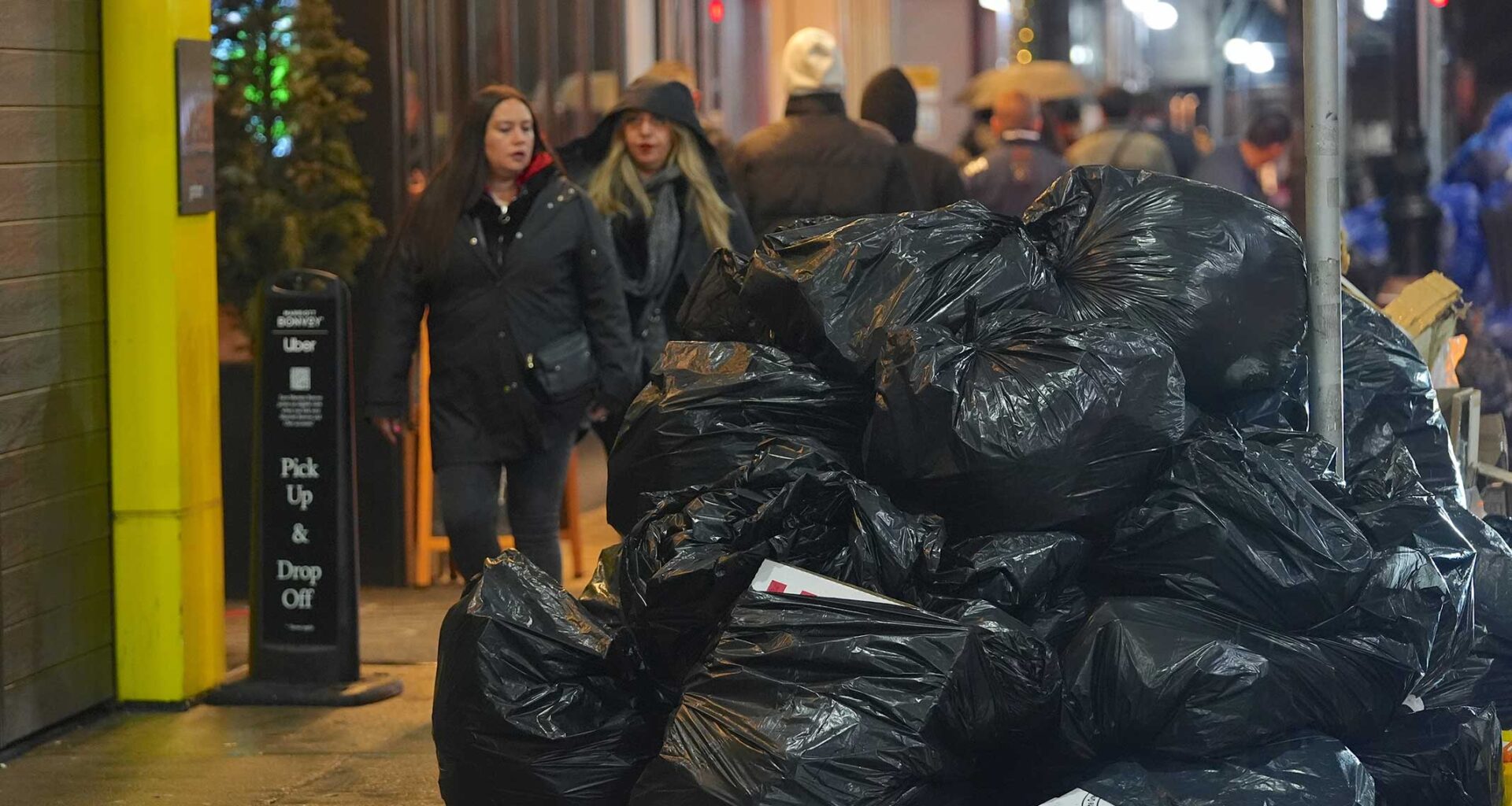In 2022, Mayor Eric Adams launched his “Trash Revolution” and “War on the Rats,” contracting with McKinsey & Co. to devise an ambitious plan to containerize New York City’s growing trash problem. Originally scheduled for full implementation by the end of 2026, the plan mandates that businesses and residential buildings use bins rather than placing bags directly on the curb—a fundamental shift for a city that has relied on sidewalk bag collection for decades. But according to a recent document from the Department of Sanitation (DSNY), the plan may now take up to seven more years, with full completion pushed to June 2032.
This extended timeline reflects how city government depends on mayoral oversight to coordinate among competing agency interests.
Certainly, the containerization project itself is far from simple. It requires meticulous scheduling and new trucks equipped for automated loading to fit into the city’s notoriously tight spaces. But the major impediment to full rollout isn’t truck logistics or funding; it’s space. Each bin claims what residents already consider precious parking territory, and city agencies also have their own, often competing, interests in that limited real estate.
In 2023, the Department of Sanitation (DSNY) concluded that trash containerization is viable for 89 percent of the city’s residential street segments, provided that no more than 25 percent of curb space on a block is devoted to containers. Still, implementing the full plan would require eliminating about 150,000 curbside parking spaces—roughly 5 percent of the city’s total, a substantial trade-off that DSNY nonetheless argued would address much of New York’s garbage problem.
Altogether, this approach would allow containerization of approximately 77 percent of the city’s residential waste tonnage without consuming excessive curb space, according to the report. Pilot projects have already begun, with new bins rolled out in West Harlem and slated for Brooklyn’s Community District 2. The remaining 23 percent of waste presents the greatest challenge, being concentrated in dense neighborhoods where containerization would require even larger sacrifices of curb space.
The report’s calculus may not account for the demand for street space from other agencies. The New York City Department of Transportation (DOT) is continuing an aggressive bike and bus lane expansion that has already consumed significant parking capacity across the five boroughs. The more DOT expands bike lanes, the more emergency service providers like the FDNY will warn about diminished access to critical routes.
In 2019, the New York City Council passed Local Law 195 establishing targets for DOT to add 150 miles of protected bus lanes and 250 miles of protected bike lanes by 2026. While the city has fallen short of these ambitious targets—only 87.5 miles of protected bike lane miles and 23.1 miles of bus lanes were in place as of 2024—the infrastructure installed has nonetheless transformed city streets.
This tension between competing uses plays out daily in neighborhoods across the city. On White Plains Road in the Bronx, where new bike lanes run from Burke Avenue to 241st Street, local business owners describe a perfect storm of space constraints. “We’re not against bike lanes, it’s just that there’s nowhere to park anymore,” said Dimitri Dellis, a local storeowner. Similarly, in Astoria, Queens, DOT’s proposal to install protected bike lanes along 31st Street—minimizing space between the train tracks and curb—has drawn strong opposition from local residents, primarily over parking, loading access, and emergency-service response time. The 31st Street Business Association has filed a legal challenge against DOT, with a ruling expected by October 6.
Ironically, to address the side effects of reduced curb space for loading, DOT made problems worse for parking. As of January, DOT had installed more than 500 dedicated loading zones, easing loading congestion but further reducing the supply of general parking.
Mayor Adams and his successor can help get the containerization effort back on track. Coordinated curb management between DSNY, DOT, the Department of Buildings, and NYPD could prevent conflicting priorities between trash containers, bike lanes, and deliveries through proper scheduling and multi-use zones. The Center for Zero Waste Design’s proposal for rolling trash bins, which can be kept inside buildings with pre-existing trash chutes, could help. Bins like these would make it possible to double the number of trash pickup spaces as temporary parking or loading zones during off-hours.
Multi-agency tension extends far beyond trash containers. City politics is a tangled web, with every tug on one thread pulling on another. Ultimately, it falls to the mayor to coordinate this web of competing interests and keep the city running.
Josh Appel is a policy analyst at the Manhattan Institute.
Photo by Selcuk Acar/Anadolu via Getty Images
City Journal is a publication of the Manhattan Institute for Policy Research (MI), a leading free-market think tank. Are you interested in supporting the magazine? As a 501(c)(3) nonprofit, donations in support of MI and City Journal are fully tax-deductible as provided by law (EIN #13-2912529).
